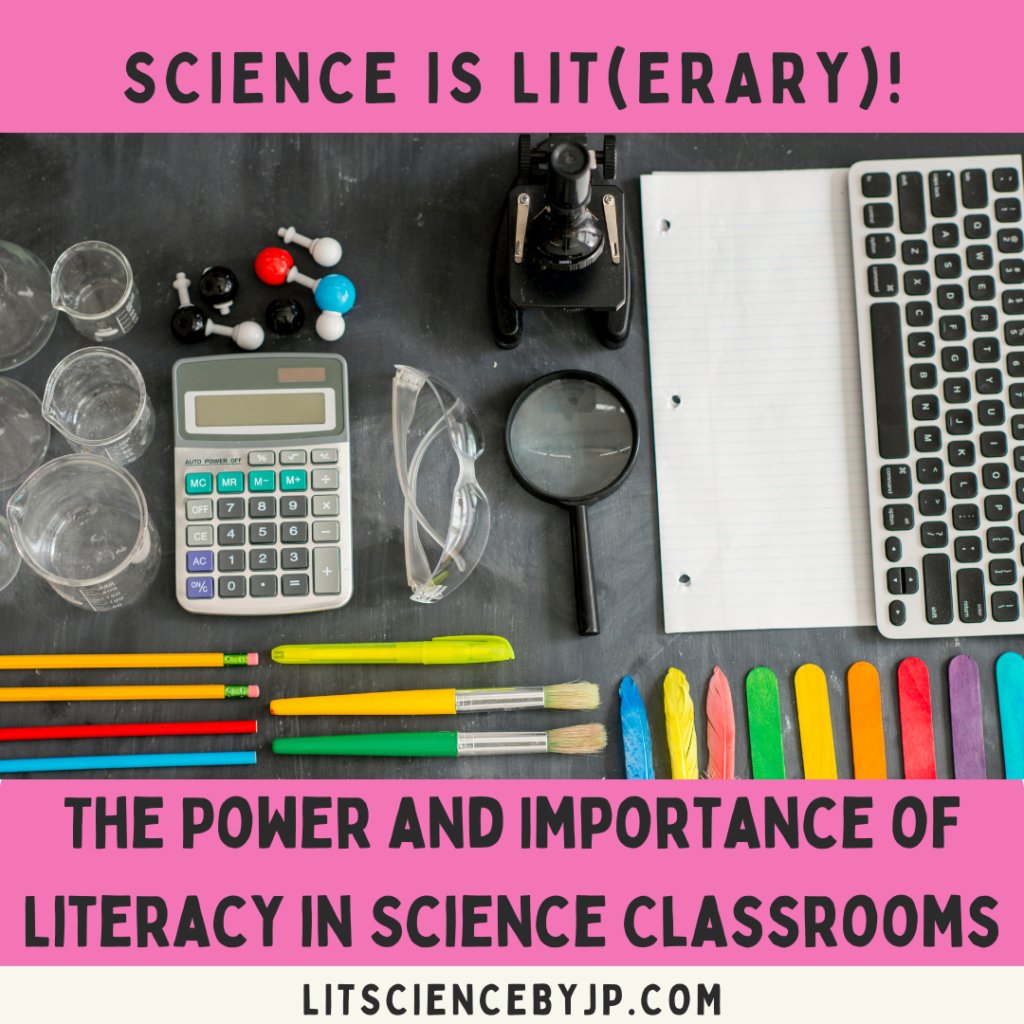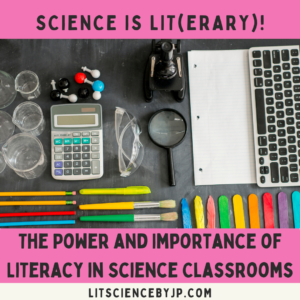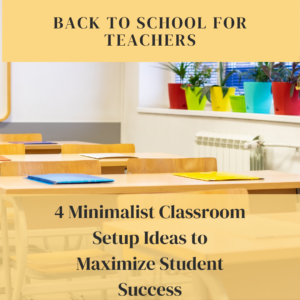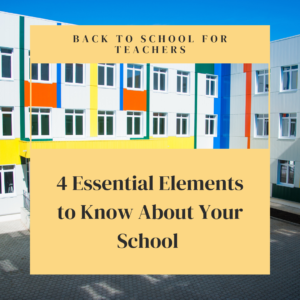As science teachers, we understand the importance of reading and writing in science. We know STEM professionals must read to learn about advancements in the field. They must write to communicate with other STEM professionals. They must read and write to keep their certifications and professional licenses up-to-date. What we don’t always recognize is the importance of teaching literacy in our science classrooms. In this post, we’ll explore science literacy and strategies for integrating literacy into science.
What is Science Literacy?
Literacy is typically defined in two ways: 1. The ability to read and write and 2. Competence and knowledge in a specific area. Hence, we can view science literacy through both of these interconnected lenses. Science literacy is the knowledge of science and the skills associated with science (making observations, forming hypotheses, experimenting/engineering, making claims backed by data, thinking critically to solve problems, etc). Furthermore, acquiring more scientific knowledge and engaging in scientific practices requires reading and writing. This post will focus on the importance of teaching reading and writing as a way to build competencies and knowledge in the sciences.

The importance of Literacy in Science
Literacy provides access: access to information, access to communication, and access to participation.
- Access to information: In our everyday lives, we constantly read. Whether it’s current events, fiction, social media posts, or scholarly journal articles, we need to read to access information. This is especially true in science. As research and data continue to add to scientific knowledge, we need strong literacy skills to stay abreast of scientific advancements.
- Access to communication: Now, more than ever, we depend on writing to communicate. Emails, text messages, job applications & resumes, sharing on social media, blogging, etc. all require us to write. STEM professionals must write to communicate their findings to the larger, international scientific community. These published journal articles are the basis for future experiments. Therefore, scientific advancement is dependent on reading and writing.
- Access to participation: Access to participation in different social and professional settings often requires literacy skills. A task as routine as filling out paperwork at the doctor’s office provides access to participation in one’s individual healthcare. To attend college or work in certain jobs, one must pass standardized and vocational exams. These standardized exams require reading and writing skills. In order to participate in STEM practices, STEM communities, and society in general, scholars must have strong literacy skills.

Integrating Literacy into Your Science Classroom
Traditionally, teaching reading and writing has been thought of as the ELA teacher’s job. However, we expect kids to read about the science content and write to communicate their findings in experiments. How can we expect them to do this if we haven’t taught them how?
Some may worry that teaching literacy wastes time that could be spent teaching science content. There is room for both. In order to learn science content, STEM professionals read and write. Therefore, we can mimic what actual scientists do on a daily basis in our classrooms. We can integrate literacy into our science classroom through:
- Direct Instruction: We can teach students how to read and write through direct instruction and modeling close reading strategies. Teaching students how to annotate a text and modeling close reading strategies teaches literacy skills and reinforces the science content.
- Creative Writing: Who says scientists can’t be creative? Spice things up in your science classroom by allowing students to write creatively. Allow students the opportunity to write creatively and through low-stakes writing tasks throughout the school year.
- Collaborative Reading Activities: Teach literacy through student-centered activities. Students can learn to read and write alongside their peers through collaborative reading activities such as a jigsaw or Socratic seminar.
Support for Diverse Learners
The term diverse learners acknowledges that all students are individuals with different learning styles. The term also reflects the diverse abilities, talents, racial, ethnic, cultural, and linguistic backgrounds found in a single classroom. Student body diversity is important to consider when teaching literacy in science. Here at Lit Science, we believe that ALL students can learn with the right support. Therefore, literacy instruction must be accessible to all students. We can do this through differentiating and scaffolding. Therefore, if we expect students to read and comprehend a grade-level text, those currently reading several grades below that seven-grade reading level will need support in accessing the text as well as the opportunity to practice literacy skills through low-stakes activities. It’s important to note that scaffolding does not mean watering down the content. Instead, through scaffolding, we seek to support students in accessing and rehearsing high-order thinking tasks.

How do I Start?
While many of us understand the importance of integrating literacy into our science classrooms, getting started can feel overwhelming. Get started with my back-to-school Growth Mindset Vs. Fixed Mindset Differentiated Reading and Activities.







